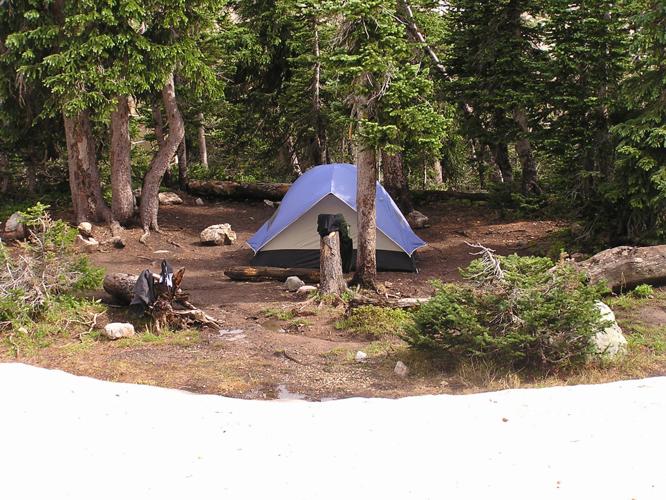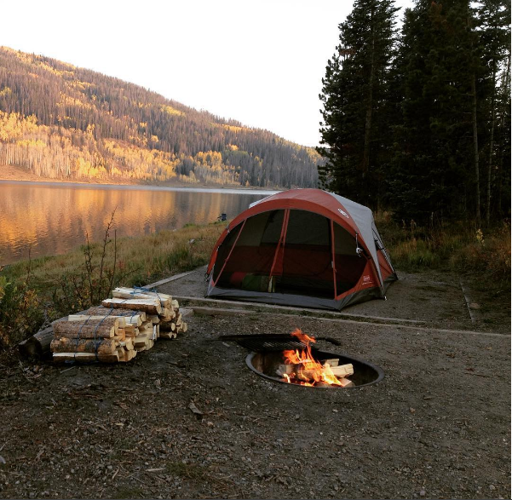Pear Lake Backcountry Campsite is a single site on the northeast side of Pear Lake, a crystalline lake at the base of 13,176-foot Copeland Mountain on the south side of Wild Basin. The site, sitting in an open forest of subalpine firs, is popular so make a reservation well in advance of your visit. Pear Lake, named for its shape, is reached by hiking 6.6 miles on Finch Lake Trail, passing Finch Lake Campsite. Allow five to seven hours to backpack to the lake from Finch Lake Trailhead. The trail gains 2,110 feet from the trailhead to the 10,580-foot site. There is no privy at the campsite so bring wag bags for human waste. Water is available from Pear Creek below the lake. Treat or boil water before use. The campsite isn’t free of snow until early July.
Pro Tips
Reach Finch Lake Trailhead by driving south from Estes Park on Colorado Highway 7 to Wild Basin Road. Turn right or west on Wild Basin Road to the park entrance station. Continue for 1.8 miles to a parking area that’s 0.2 miles before Wild Basin Trailhead and the Ranger Station. Hike 4.6 miles up Finch Lake Trail to Finch Lake. Continue another two miles up Cony Creek to the campsite and lake. A wooden site marks a short path to the site north of the trail.A backcountry permit is required for all overnight camping in Rocky Mountain National Park’s backcountry. Obtain permits at the Park Headquarters Backcountry Office next to Beaver Meadows Visitor Center west of Estes Park, at Kawuneeche Visitor Center north of Grand Lake, or at the park website.To obtain a permit you agree to obey National Park regulations for backcountry camping. The Backcountry Use Permit must be with you at all times and a tent tag must be displayed on your pack while hiking and on your tent. You must follow your planned itinerary so campsites aren’t overused or crowded. You also receive a tag to place on the dashboard of your vehicle, allowing overnight parking at trailheads without being towed.Practice a Leave No Trace ethic when camping at Pear Lake. Pitch tents in designated areas near a silver arrowhead. Secure food and garbage. Black bears are here so stash food in a bear-resistant canister, which is required May to October at all campsites below timberline. Keep food, trash, and scented items in the container and store it 200 feet from the campsite. Don’t camp below dead trees; wind storms blow branches off them.No privy is at the camp site so the park requires you to bring several RESTOP wag bags for human waste. In an emergency, dig a six-inch deep hole and bury your waste and toilet paper. Make sure you’re at least 200 feet from the campsite, water sources, and trails.Recommended season(s): July to September.
—Stewart M. Green









(0) comments
Welcome to the discussion.
Log In
Keep it Clean. Please avoid obscene, vulgar, lewd, racist or sexually-oriented language.
PLEASE TURN OFF YOUR CAPS LOCK.
Don't Threaten. Threats of harming another person will not be tolerated.
Be Truthful. Don't knowingly lie about anyone or anything.
Be Nice. No racism, sexism or any sort of -ism that is degrading to another person.
Be Proactive. Use the 'Report' link on each comment to let us know of abusive posts.
Share with Us. We'd love to hear eyewitness accounts, the history behind an article.